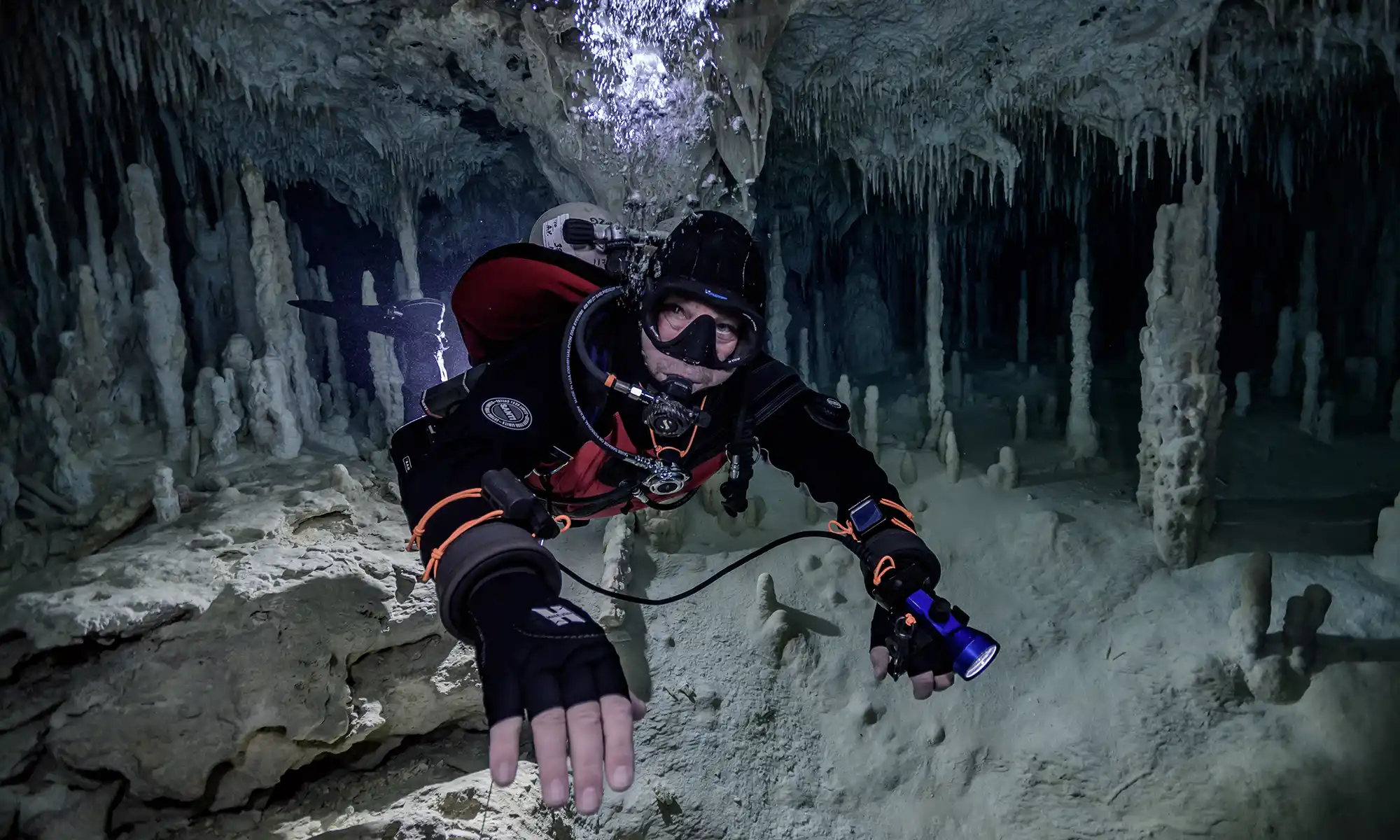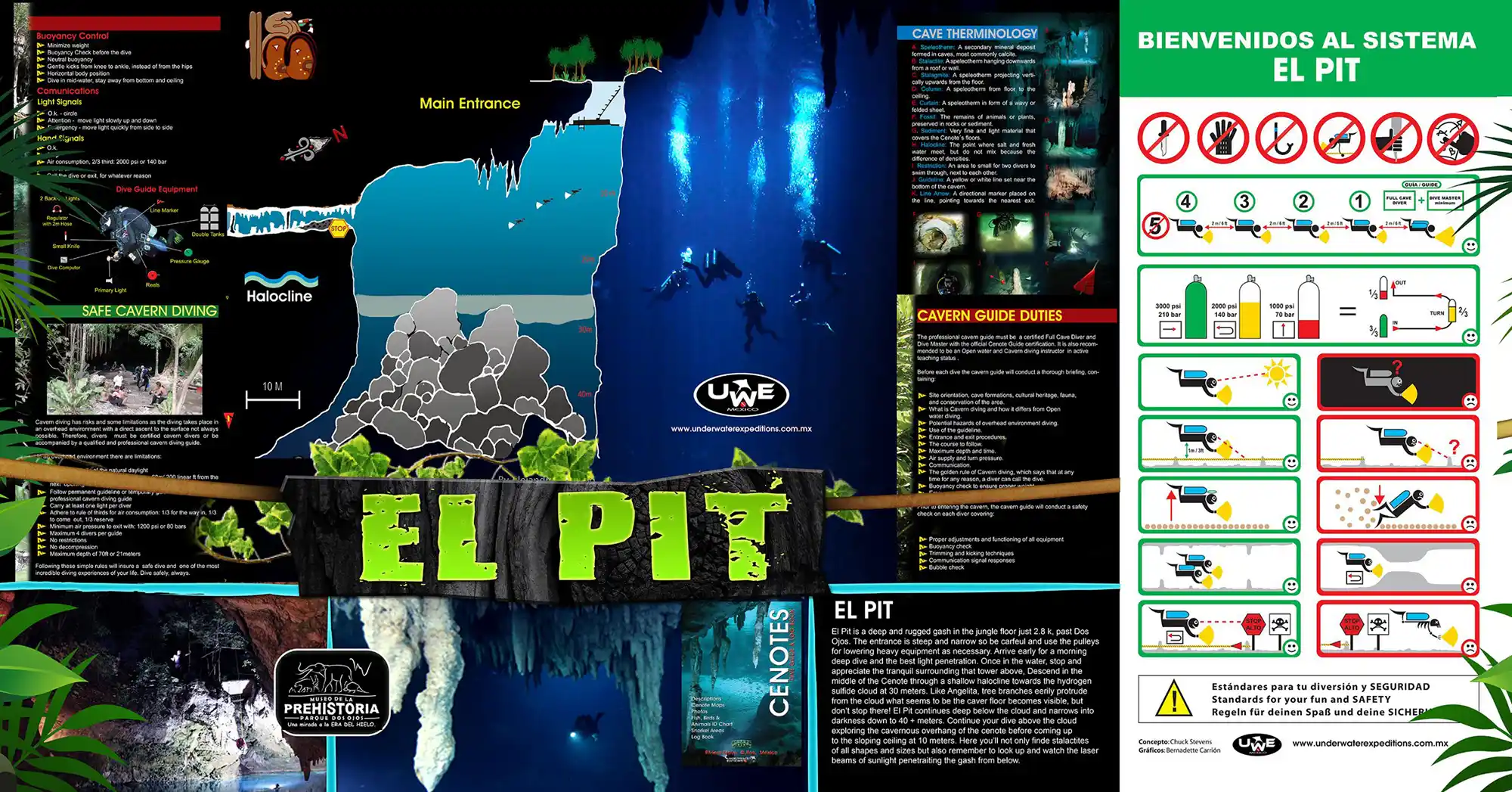El Pit Cenote is famous for various reasons. It is one of the dream cenotes for all divers since it is 121 meters deep. Also, explorers discovered two human skeletons that are more than 10,000 years old there.
Undoubtedly, the depth of the El Pit Cenote is more than enough to attract the attention of hundreds and thousands of people who every year take the challenge of diving in the striking waters, leaving us incredible postcards of its terrifying beauty.
Recreational (Open Water) Divers can only go down up to 30 meters here. This is more than enough to admire the greatness of this place and the security it represents since the following meters have been little explored so far.
The ancient Mayans and current generations have a very peculiar name for this cenote, since it is known as the door of Xibalba, this could be translated as: "the door to the world of death" or "the door to the underworld".
The El Pit Cenote is undoubtedly one of the most beautiful. It has an oval-shaped opening of 10 meters, and its main attraction is the beautiful rays of light that cross the cavern’s crystalline water. You should take advantage of the views in the early morning hours and observe how the light rays pass through this impressive sinkhole from below.
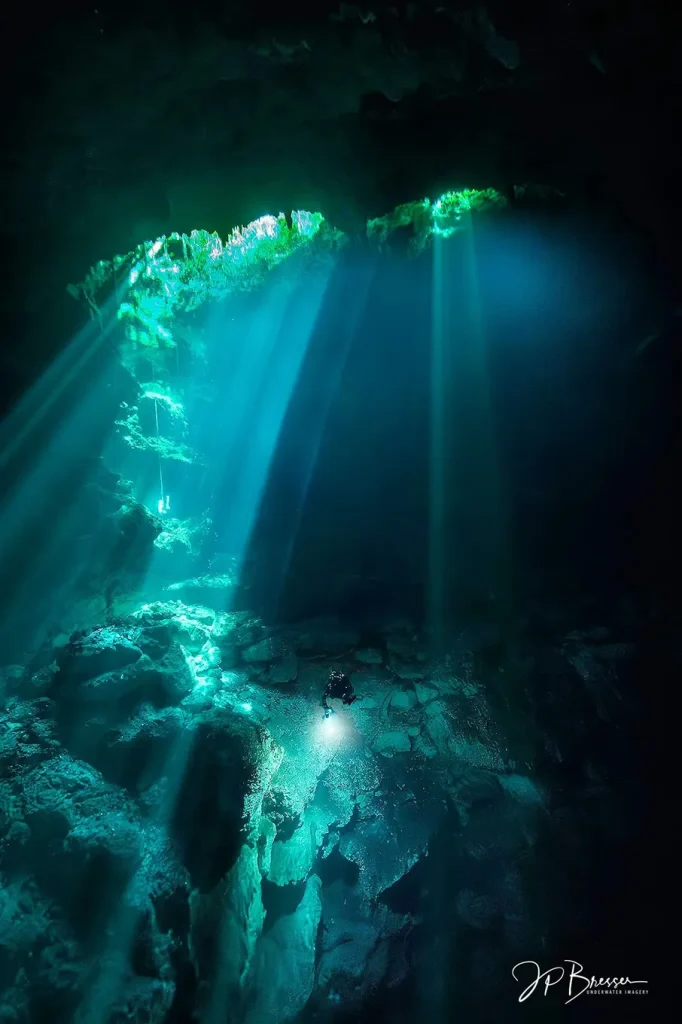
Freshwater begins to meet salt water around 20 meters deep, causing light to take interesting shapes in the water.
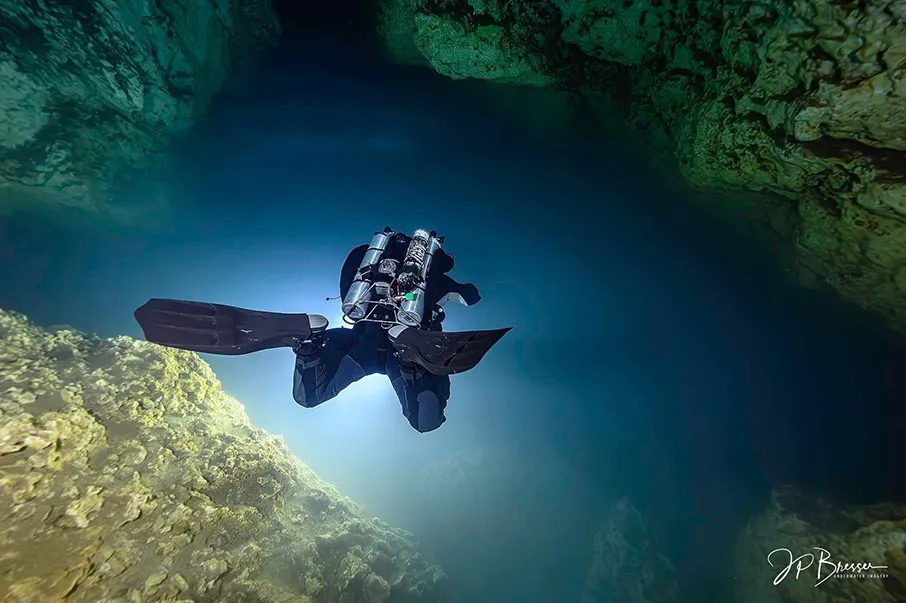
The phantasmal layer of hydrogen sulfide, which has an impressive thickness that resembles fog, is about 27 meters deep. Inside the water, it is located right in the area of the collapsed rocks piled on the bottom with some tree branches.
Diving below 30 meters in Cenote El Pit requires special technical equipment and diver qualifications. You can take the necessary technical and cave diving courses at our dive center.
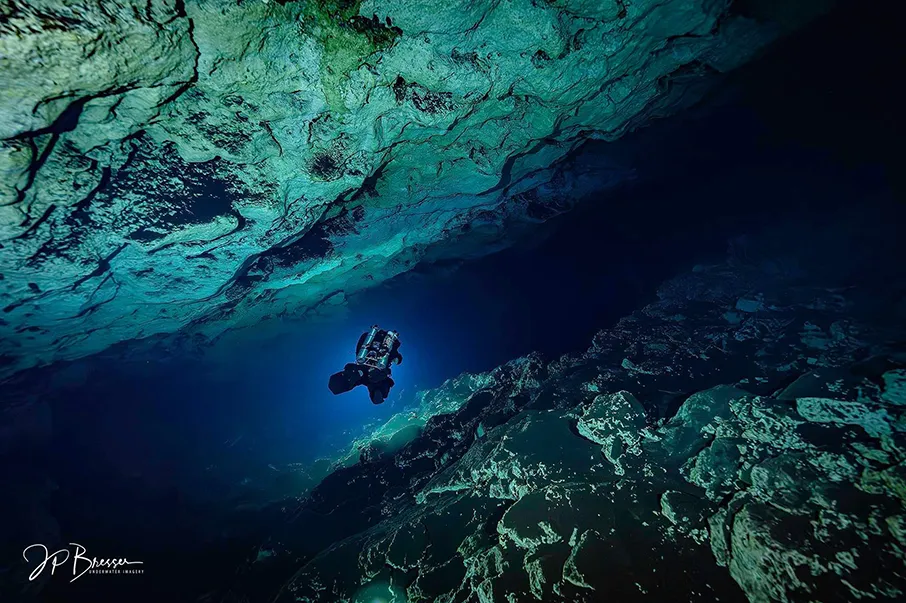
El Pit Cenote map
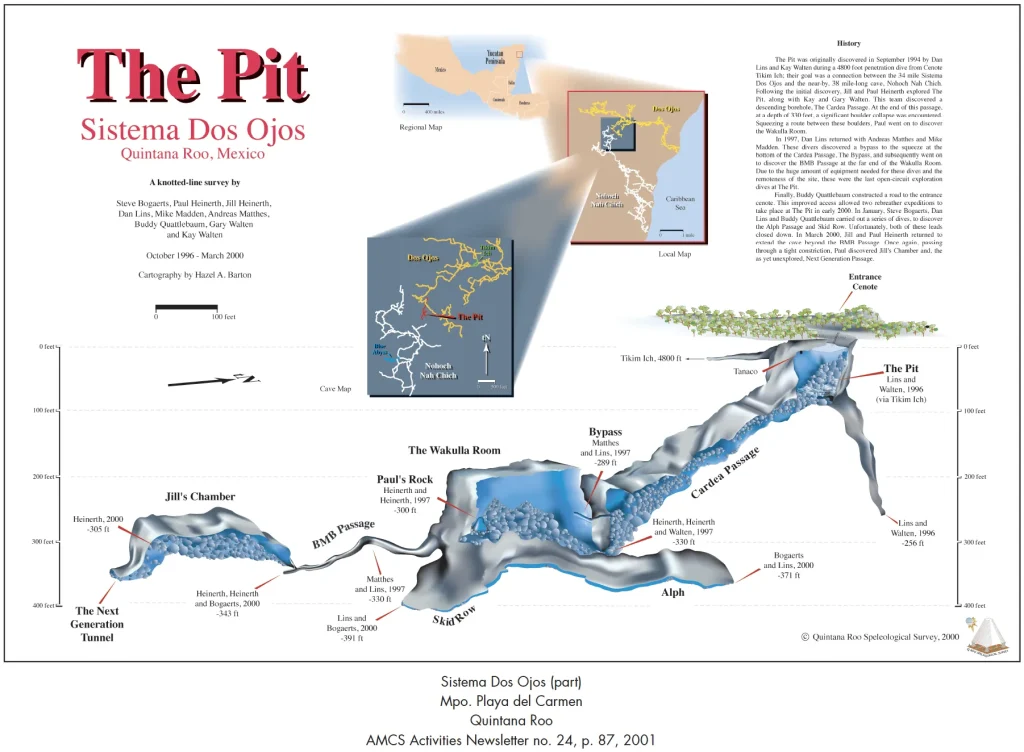
Discovery and first exploration of Cenote El Pit
The Pit was originally discovered in September 1994 by Dan Lins and Kay Wallen during a 4800-foot penetration dive from Cenote Tikim Ich. They aimed to connect the 34-mile Sistema Dos Ojos with the nearby 38-mile-long cave, Nohoch Nah Chich.
Our Taak Be Ha – Tikim Chi – El Pit cave diving video
Undeterred by the challenges, the team of Jill and Paul Heinerth, along with Kay and Gary Wallen, fearlessly embarked on a journey of exploration at The Pit. Their path was not without obstacles. A descending borehole, The Cardea Passage, led them to a depth of 330 feet, where a significant boulder collapse posed a formidable challenge. Navigating a route between these boulders, Paul’s unwavering perseverance led to the discovery of the awe-inspiring Wakulla Room.
In 1997, Dan Lins returned with Andreas Matthes and Mike Madden. They discovered a bypass to the Cardea Passage, “The Bypass”, and the BMB Passage at the far end of the Wakulla Room. Due to the huge amount of equipment needed for these dives and the site’s remoteness, these were the last open-circuit exploration dives at The Pit. This marks a significant shift in the exploration techniques and strategies within the cave diving community.
Discovering the Jill’s Chamber and the Next Generation Passage
Continuing the legacy of exploration, Buddy Qualllebaum made a significant contribution by constructing a road to the entrance cenote, improving access to The Pit. This development paved the way for two rebreather expeditions in early 2000. In January, Steve Bogaerts, Dan Lins, and Buddy Quattlebaum undertook a series of dives, leading to the discovery of the Alph Passage and Skid Row. Despite these leads closing down, the spirit of exploration persisted. In March 2000, Jill and Paul Heinerth returned, pushing the boundaries of the cave beyond the BMB Passage. Once again, Paul’s determination led to the discovery of Jill’s Chamber and the yet unexplored Next Generation Passage.
Stairway to Heaven and Getting Step passage surveying
In 2011, Krzysztof Starnawski and a support group explored the extension of The Next Generation Tunnel another 180 meters towards the Blue Abyss. He named the cave’s continuation Stairway to Heaven. The name is probably taken by analogy with the Stairway to Heaven, made of steel cables in the Austrian resort area of Salzkammergut, passing on a sinkhole (Abyss) 700 meters deep.
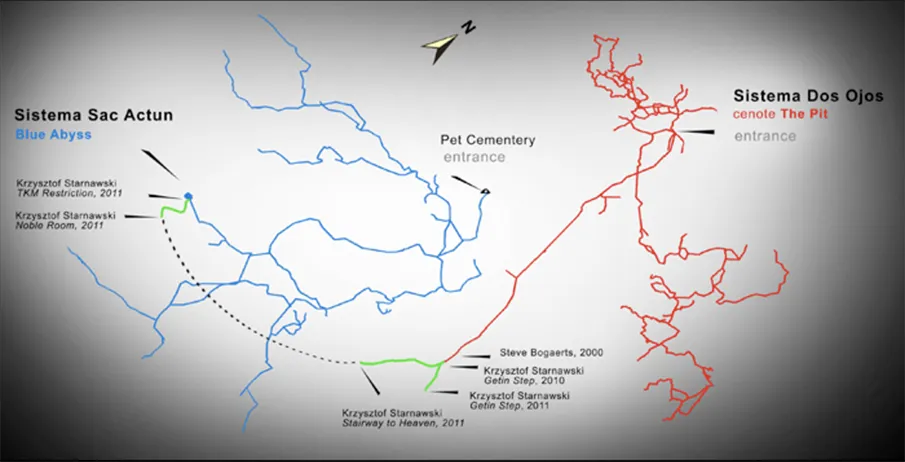
Also, he explored a separate 70-meter passage behind The Next Generation Tunnel, which he called the Getting Step passage.
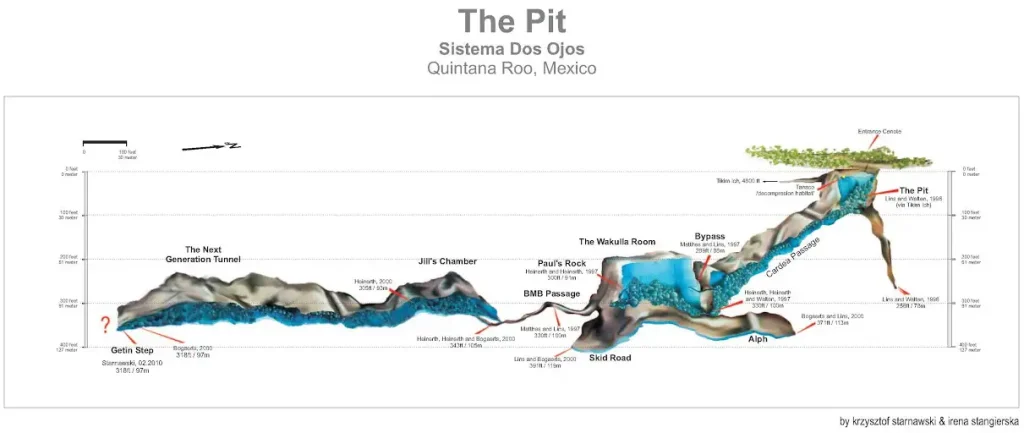
From the Bluy Abyss side, he also found and explored the “Eques” passage (another known name TKM (in loose translation: Now Is Our Time!!!) passage and the “Noble Room” hall with a total length of 200 meters and going down to 101 meters, thus increasing the depth of the Blue Abyss from the traditional 71 meters to 101.
It is assumed that these two passages can be connected, thus creating an underwater connection between the Nohoch and Dos Ojos cave systems.
El Pit Cenote location map
Back
